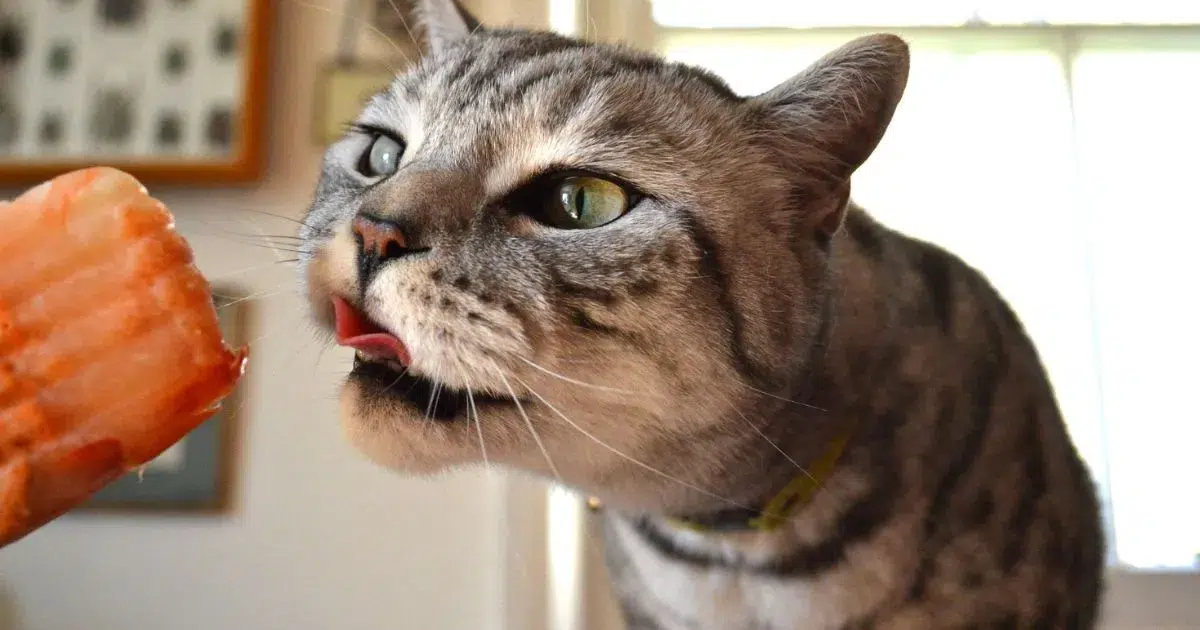Explore the safety and nutritional implications of feeding salmon skin to cats. Learn about potential risks and benefits to make informed decisions about your feline’s diet. Many cat owners have wondered whether their feline companions can safely eat salmon skin. While salmon is a nutritious protein source for cats, there are concerns regarding the safety and nutritional value of the skin itself. In this article, we will examine the nutritional profile of salmon skin, the potential risks associated with consuming it, and expert opinions on the matter.
Nutritional Composition of Salmon Skin
Salmon skin contains numerous nutrients, including omega-3 fatty acids, vitamin D, and selenium. However, it is essential to consider how these nutrients align with cats’ specific dietary requirements. Cats require high amounts of protein and taurine, which are not found in significant quantities in salmon skin.
Safety Concerns
Feeding salmon skin to cats can pose several safety concerns. Firstly, the skin may contain high levels of contaminants such as heavy metals and toxins, particularly if sourced from wild-caught salmon. Secondly, it may contain bacteria or parasites that could lead to foodborne illness in cats. Lastly, the high-fat content in salmon skin can cause digestive issues, obesity, and pancreatitis in cats.
Expert Opinions
Veterinarians and animal nutritionists advise against feeding cats salmon skin because of the risks associated with bacterial contamination and the imbalances in nutrients compared to cats’ specific dietary needs. While salmon contains essential nutrients beneficial to cats, salmon skin is not a complete protein source and is not necessary for a well-balanced diet.
Benefits, if Any
Although there are claims suggesting that consuming salmon skin may offer health benefits such as enhancing skin and coat condition, it’s essential to note that there is limited scientific evidence to substantiate these assertions. Cats can obtain the necessary nutrients from other protein sources, including commercial cat food and fresh raw meat.

Precautions for Feeding Salmon Skin to Cats
If cat owners wish to feed salmon skin to their pets, it is important to take precautions to reduce the risks associated with bacterial contamination. The skin must be fresh, plain, unseasoned, and fully cooked, as cooking can reduce the levels of harmful bacteria and parasites. It is recommended to consult with a veterinarian before introducing salmon skin into a cat’s diet, as they can provide personalized advice based on the cat’s specific dietary requirements and health status.
Alternatives to Salmon Skin
Commercial cat food diets containing fish or fish oil supplements aim to offer complete and balanced nutrition for cats while mitigating potential health risks linked to consuming raw or undercooked fish. Additionally, alternative protein sources such as chicken, turkey, and beef can provide cats with the necessary nutrients in a safe and balanced diet.
Conclusion
In conclusion, cats can technically eat salmon skin, but it may pose several health risks and does not provide the necessary nutrients cats require in their diets. Cat owners are advised to refrain from feeding their pets salmon skin and instead choose commercial cat food or alternative protein sources, such as cooked chicken, turkey, or beef. As always, consulting with a veterinarian regarding a cat’s dietary needs is crucial for maintaining their health and well-being.
Frequently Asked Questions
Are there any health benefits for cats in consuming salmon skin?
While salmon skin contains nutrients such as omega-3 fatty acids, it may not provide the necessary balance of nutrients that cats require for optimal health. Experts recommend prioritizing a balanced and complete diet specially formulated for cats to ensure they receive all their essential nutrients.
What are the risks of feeding salmon skin to cats?
The risks include harmful substances from the smoking process, digestive issues, obesity, pancreatitis due to high fat content, and bacterial contamination leading to foodborne illness.
Are there safer alternatives to feeding cats salmon skin?
Yes, you can safely incorporate other fish options like cooked and deboned salmon, tuna, or whitefish into your cat’s diet in moderation. It is important to ensure the fish is from reputable sources, cooked thoroughly, and free from harmful additives or seasonings. Consult with a veterinarian for personalized advice.